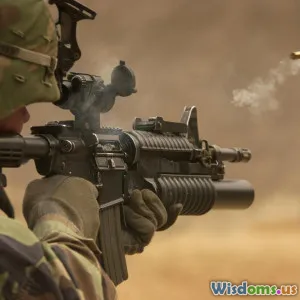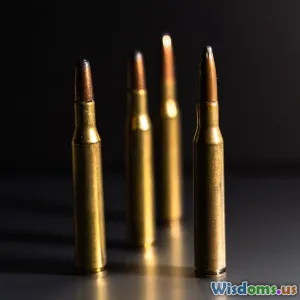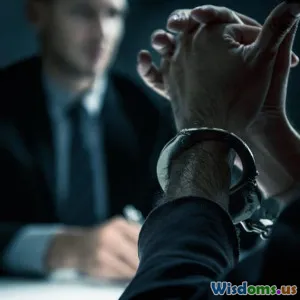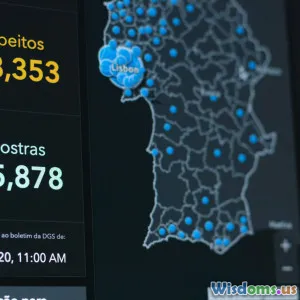
From Crime Scene to Courtroom Tracing Bullets Back to Their Guns
9 min read Explore how forensic science traces bullets to firearms, unraveling mysteries from crime scenes to courtrooms. (0 Reviews)
From Crime Scene to Courtroom: Tracing Bullets Back to Their Guns
Imagine a bullet lying on a crime scene floor — a tiny metal fragment yet one of the most telling pieces of evidence in a criminal investigation. Behind that solitary bullet is a complex story woven through advanced forensic science, meticulous laboratory work, and powerful courtroom evidence. This article unpacks how investigators trace bullets back to the firearms that fired them, ultimately supporting prosecutions and exonerations alike.
Introduction
Every firearm leaves a signature on the bullets it fires—unique microscopic patterns etched by the barrel’s inner surface known as rifling. These patterns form the foundation for forensic ballistics, a speciality blending physics, engineering, and detective work. Tracing a bullet back to its gun can connect suspects to crimes, exclude innocent people, and provide decisive proof in courts. Yet, this pathway is far from straightforward.
In this article, we explore each stage of the process—from the chaotic environment of a crime scene to the rigor of a courtroom trial. We uncover the forensic techniques behind bullet identification, the challenges professionals face, and how ballistics evidence has shaped real-world legal outcomes.
The Science of Ballistics: Unlocking a Bullet's Secrets
What Is Ballistics?
Ballistics is the study of the dynamics of projectiles — specifically, how bullets behave from the moment a firearm is discharged. It is divided into three categories:
- Internal Ballistics: How a bullet is propelled through the firearm barrel.
- External Ballistics: Bullet flight path through the air.
- Terminal Ballistics: Interaction of the bullet upon impact.
For forensic purposes, internal ballistics and wound ballistics are particularly important to link recovered bullets to specific weapons.
Firearm Markings: The Unique Fingerprints
Every firearm barrel has rifling — spiral grooves that impart spin to a bullet. Because each barrel is manufactured uniquely and wears distinctively over time, these grooves leave individual marks on fired bullets. Known as:
- Lands and Grooves: Raised and indented lines inside the barrel.
- Striations: Microscopic scratches and marks unique to each gun barrel.
When a bullet is fired, it is stamped with the barrel’s unique signature. Imaging and comparing these patterns helps forensic experts identify the gun used.
Imaging and Comparison Techniques
Modern ballistic examiners use specialized optical comparison microscopes to examine paired sample bullets side by side. Techniques include:
- Traditional Optical Ballistic Microscopy: High-resolution side-by-side image comparison.
- Automated Ballistic Identification Systems: Digital databases like the National Integrated Ballistic Information Network (NIBIN) in the U.S., which allow rapid comparison nationwide.
From Crime Scene to Laboratory: Collecting and Preserving Bullet Evidence
The Crime Scene Challenge
Crime scenes involving firearms pose unique risks:
- Bullets can be thin, deformed, or fragmented, complicating recovery.
- Contamination risks can degrade the evidence.
- Position and orientation offer contextual clues.
Investigators carefully document each bullet’s location with photographs, sketches, and extract them using precision tools to avoid damaging their unique markings.
Chain of Custody
Maintaining a verified chain of custody is critical to preserve bullet integrity for court admissibility. Every transfer—from collection to testing labs and courtroom—must be meticulously documented.
Case Example: The Beltway Sniper Case
In 2002, ballistic experts compared bullets recovered from multiple crime scenes in the Washington D.C. sniper attacks to the firearm found in John Allen Muhammad’s possession. The precise match helped conclusively link the gun to the killings, demonstrating how crucial bullet tracing is for solving serial crimes.
Laboratory Analysis: Linking Bullets to Firearms
Examination of Bullets and Cartridge Cases
In addition to bullets, investigators often analyze cartridge casings. Casings contain firing pin impressions and breech face marks, further individualizing firearms.
Comparison Process
Forensic experts:
- Clean and prepare bullet samples carefully.
- Mount bullets under comparison microscopes.
- Examine longitudinal and transverse striations.
- Identify matching patterns.
Modern Advances: 3D Ballistics Imaging
New technologies now scan bullets in 3D, allowing detailed digital profiles stored in databases. This significantly increases matching accuracy and speed, improving investigative outcomes.
Challenges in Bullet Matching
Factors complicating bullet analysis include:
- Bullet deformation or fragmentation.
- Damage during recovery or handling.
- Use of altered or homemade firearms.
- Multiple firearms producing similar striations.
Despite challenges, expert examiners maintain rigorous standards to differentiate genuine matches from coincidental similarities.
The Courtroom: Presenting Ballistic Evidence
Importance of Expert Testimony
Forensic ballistic experts translate complex microscopic findings into understandable explanations for judges and juries. They testify about:
- How bullet markings were matched.
- The uniqueness and reliability of such matches.
- Limitations and error margins.
Case Study: State v. Allen
In a landmark 2010 trial, expert testimony from ballistic experts was central to convicting a suspect accused of homicide. The witness demonstrated bullet markings matched the defendant's registered firearm without reasonable doubt, overcoming defence challenges about possible contamination.
Legal Standards and Daubert Challenges
Courts often scrutinize forensic methods under standards such as the Daubert ruling, assessing whether ballistics identification rests on scientific validity. Experts must ensure techniques are empirical, peer-reviewed, and widely accepted.
Impact On Justice
Ballistic evidence can:
- Secure convictions in violent crime cases.
- Exonerate wrongfully accused individuals when no ballistic match is found.
- Provide insight into crime timelines and weapon usage.
Pushing the Frontier: Future Directions in Ballistics Forensics
Artificial Intelligence and Machine Learning
AI-powered systems are beginning to analyze ballistic data more rapidly and accurately, reducing human error and bias.
Microstamping Technology
Some jurisdictions advocate microstamping, where firearms imprint a unique code on cartridge casings, simplifying identification, but it is controversial due to technical and political hurdles.
Expanding Databases and Cross-Jurisdiction Sharing
Efforts continue to expand and harmonize ballistics databases internationally to assist in solving cross-border firearm crimes.
Conclusion
Tracing bullets from crime scenes back to their guns is a remarkable convergence of science, meticulous process, and justice. Forensic ballistics not only reveals crucial truths about violent crimes but also upholds the integrity of legal proceedings by delivering objective, evidence-based insights. As technology advances, the future promises even greater precision and speed, empowering investigators and courts to seek truth with increasing confidence.
Understanding this journey—from that fired bullet lying silent on the pavement, through painstaking laboratory analysis, to powerful courtroom testimony—illuminates just how indispensable ballistics evidence is in unraveling crime and delivering justice.
Author Note: This article is informed by various forensic science sources, case law examples, and interviews with ballistic specialists to provide a comprehensive view of this critical forensic domain.
References
- National Integrated Ballistic Information Network (NIBIN). Bureau of Alcohol, Tobacco, Firearms and Explosives (ATF).
- Houck, M.M., & Siegel, J.A. (2010). Fundamentals of Forensic Science. Elsevier.
- State v. Allen, 2010, Supreme Court.
- Scientific Working Group for Firearms and Toolmarks (SWGGUN). Best practices in firearms examination.
- Bush, E., et al. (2021). The role of AI in ballistic image comparison. Forensic Science International, 323:110735.
Rate the Post
User Reviews
Other posts in Forensic Science
Popular Posts

















